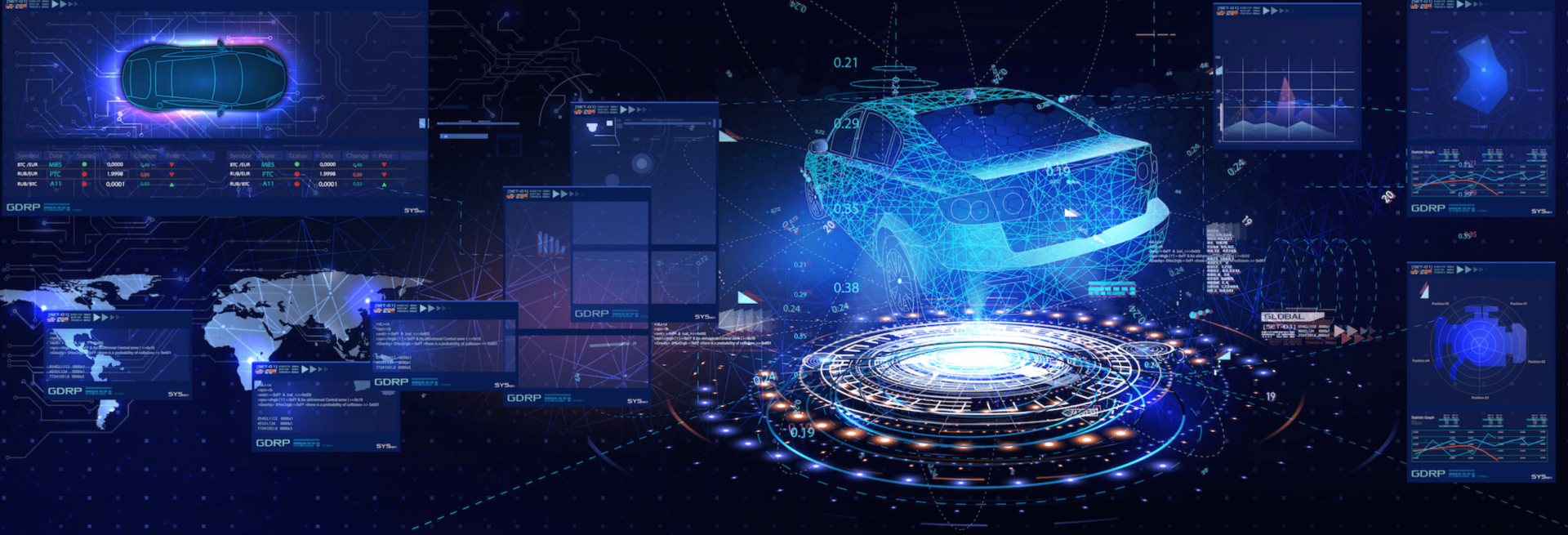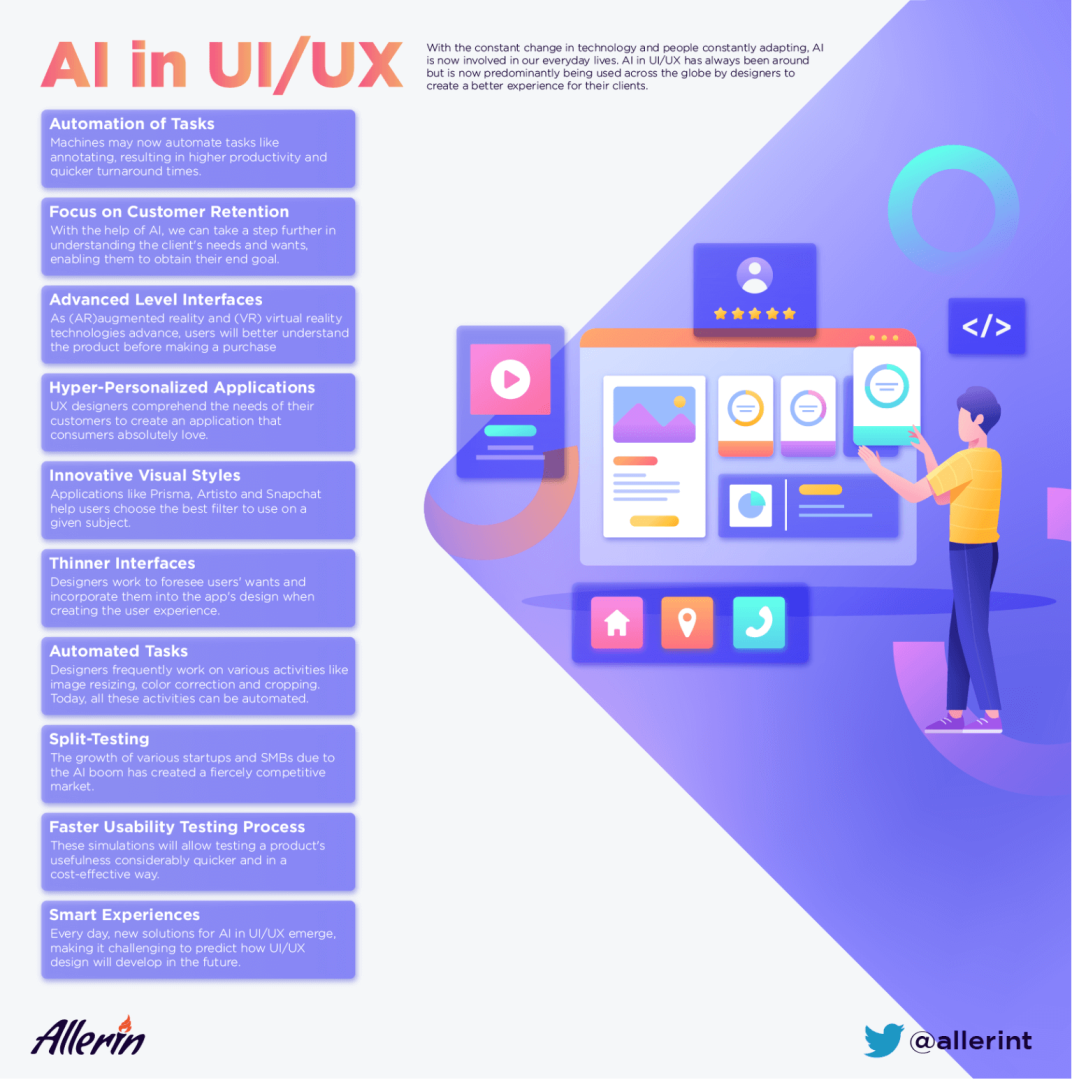Comments
- No comments found

With the constant change in technology and people constantly adapting, AI is now involved in our everyday lives.
AI in UI/UX has always been around but is now predominantly being used across the globe by designers to create a better experience for their clients.
Today, artificial intelligence and machine learning algorithms are used to move through even the most basic choices, such as the next music in the streaming queue or the projected arrival time from a GPS app. We use these algorithms and data annotations for various purposes to improve efficiency and personalization. Recently, AI in UI/UX has also done this.
Annotation in AI is the process of labeling the data on photographs. The image may include people, cars, or other objects to help computers recognize it. There are many kinds of annotations, and they can be used to teach machines about different things.
Annotated data sets are necessary for training the algorithms used by text-based machine learning systems for data mining and information extraction. It will make data more accessible for machines to recognize while an algorithm runs.
Thanks to computer vision tasks, deep learning techniques can be used to address various complex problems in the real world. A deep network can segment and identify the "key point" of each object in the image with the help of extensive training. The system can more easily analyze the "key point" with more labeled data. Google has extensively investigated the theory that more data leads to better performance with a data set of 300 million photos! The more labeled data, the better the performance.
The foundation of consumer experience is data. AI can assist in turning the customer insight that brands are gathering into useful information.
Today, data scientists devote a substantial amount of time to data preparation. A portion of it is used to ensure accurate measurements and rectify or reject abnormal or out-of-the-ordinary data. These are essential responsibilities because algorithms extensively rely on patterns to draw their conclusions and because inaccurate data can lead to biases and inaccurate predictions by AI.
User research insights are the sole foundation of UI/UX design, used to construct the user interface effectively. With a solid understanding of a brand's target market, users and products, UI/UX design has had a lot of potential worldwide in recent years. Both websites and mobile applications require excellent responsive web design to perform well for the intended audience. In this industry, user satisfaction is essential; a brand's UI/UX development may make or break it. While UI (user interface) is focused on visual navigation, UX (user experience) manages audience interaction with a mobile application or website.
The introduction of AI in UI/UX creates user-focused websites and mobile applications with real-time data that can instantly please users. It frequently provides creative ideas, dynamic testing and hyper-personalization to strengthen the bond between a brand and a user. It assists designers by delivering rapid and automatic solutions to various client demands.
One of the challenges faced by the UI/UX market would be not developing a solid understanding of developing websites for localization of worldwide markets. Artificial intelligence allows the target audience to recreate the English language experience in many regional languages. Utilizing artificial intelligence can effectively resolve language-related issues for globalization. This was just one example of how AI can help with UI/UX; let’s dive a little deeper into this below.

The UX has changed significantly due to AI and predictive analysis, helping designers and developers produce a client-focused design. Machines may now automate tasks like annotating, resulting in higher productivity and quicker turnaround times.
UX has always focused on giving customers the best experience to keep using your product or service. With the help of AI, we can take a step further in understanding the client's needs and wants, enabling them to obtain their end goal.
Top AI consulting companies are integrating visual content into user experience (UX) to provide customers with a clear picture of their needs. As (AR) augmented reality and (VR) virtual reality technologies advance, users will better understand the product before making a purchase. There has never been a client touchpoint like this previously. AI is creating high-quality user interfaces that assist customers in finding the right solutions.
UX designers comprehend the needs of their customers to create an application that consumers absolutely love. This requires them to continuously gather raw data points from their clients, which frequently overwhelms design teams. But now, with the help of AI, they can collect and interpret this data more quickly and effectively. As a result, teams can design unique applications for their clients.
Providers of AI solutions are developing cutting-edge programs that can produce dynamic visuals. Applications like Prisma, Artisto and Snapchat help users choose the best filter to use on a given subject.
Google's AI initiative Auto Draw automates the completion of rough sketches and transforms them into polished versions, allowing both designers and non-designers to develop items quickly and easily.
Thinner interfaces will be a trend in UX design in the future. The "thinness" of a system relates to fewer obstacles that a user may encounter when utilizing it or attaining their objective. For example, a "thinner experience" would be using Siri to operate home appliances rather than manually turning on/off lights and fans.
Designers work to foresee users' wants and incorporate them into the app's design when creating the user experience. Even if such a strategy might be effective for some users, it might not be effective for all demographic groups. Hence, the most prominent artificial intelligence (AI) businesses are creating applications like chatbots, predictive searches and chat systems that are excellent at comprehending user inquiries.
Designers frequently work on various activities like image resizing, color correction and cropping. Today, all these activities can be automated. The best artificial intelligence software development businesses are creating solutions that can automate such monotonous, repetitive operations, so a designer may no longer be required to supervise the completion of these jobs.
Users will have individualized experiences thanks to AI-based UI design. The growth of various startups and SMBs due to the AI boom has created a fiercely competitive market. With so many rival businesses, each one is fighting for the market.
A split test is typically carried out to determine which version of the product has the most exceptional chance of success. Two versions of a product generally are released to accommodate various user types. However, with AI data such as similar audiences, previous searches and engagement on other products, services can now be customized to the requirements of each client.
Designers go through a process where they consider how users might utilize a product when evaluating its usability. This process can be expensive and time-consuming. But with AI, this process becomes more straightforward. AI is now able to assist in simulating user interactions with products. These simulations will allow testing a product's usefulness considerably quicker and in a and cost-effective way.
The largest artificial intelligence businesses are well aware of and highly value intelligent experiences. Although less common, smart experiences driven by AI will eventually become the norm. Artificial intelligence can interpret pictures for people with visual impairments by understanding the context of the image. Additionally, it might facilitate more innovative advertising opportunities.
Every day, new solutions for AI in UI/UX emerge, making it challenging to predict how UI/UX design will develop in the future. But AI will surely enable designers to have a more significant impact. Additionally, it aids in automating repeated operations to save designers’ time. With advances in natural language processing (NLP) and machine learning, we are moving away from a client-team gap and toward a future where each customer will receive a tailored experience.
Naveen is the Founder and CEO of Allerin, a software solutions provider that delivers innovative and agile solutions that enable to automate, inspire and impress. He is a seasoned professional with more than 20 years of experience, with extensive experience in customizing open source products for cost optimizations of large scale IT deployment. He is currently working on Internet of Things solutions with Big Data Analytics. Naveen completed his programming qualifications in various Indian institutes.
Leave your comments
Post comment as a guest